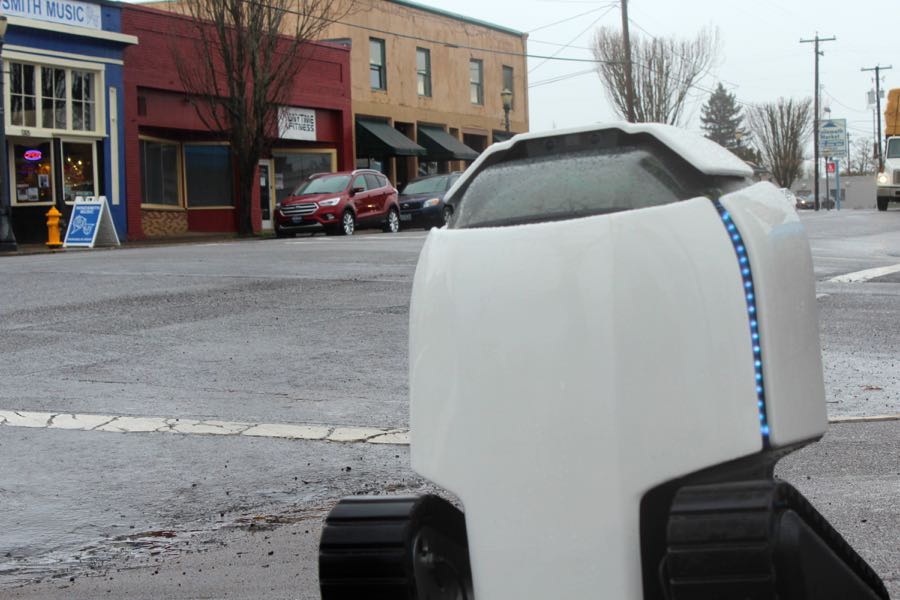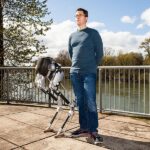Rural Oregon spawns a delivery robot.
The welcome sign at the entrance to Philomath, Ore. reads, “Home of the Philomath frolic & rodeo.”
The tiny Willamette Valley town, population 4,676, is also the birthplace of DAX, an R2D2-esque, semi-autonomous delivery robot.
 La Rockita makes its first delivery — by robot.
La Rockita makes its first delivery — by robot.
On a cloudy Tuesday in March, DAX rolls into La Rockita, the local Mexican joint. Owner Elsa Parmelee drops a burrito into Dax’s heated belly compartment. The simple action marks the first delivery for the 21-year-old family-owned restaurant — and its first robotic delivery. As DAX departs, Parmalee and her family wave and snap pictures from behind the counter, as if they were seeing off a family member at the airport.
“I’ve never seen anything like DAX before,” Parmalee says. “It’s amazing how much technology is coming into play.”
 La Rockita Owner Elsa Parmalee (center) and her family bid DAX farewell.
La Rockita Owner Elsa Parmalee (center) and her family bid DAX farewell.
Dax brings to mind a Comic Con exhibit — indeed he’s become a fixture at tech and transportation conferences. But the two-foot tall robot is no joke. He addresses the costly missing link between distributors and consumers, known as the last mile. As delivery times drop to hours, or even minutes, last-mile solutions have become a critical focus for Amazon and big box retailers, along with services like Uber EATS.
Investors have poured millions into semi-autonomous robotics solutions for last-mile delivery. Last year Starship Technologies, DAX’s much larger London-based competitor, announced a partnership with Daimler, along with a $17.2 million investment from the automaker and several venture funds (Starship’s founders invented Skype and sold it to Microsoft). San-Francisco startup Dispatch raised $2 million for its “carry” delivery bot (essentially a chubbier DAX).
A 2016 Report by McKinsey & Co. predicted autonomous vehicles and robots will make 80% of last-mile deliveries by 2025.
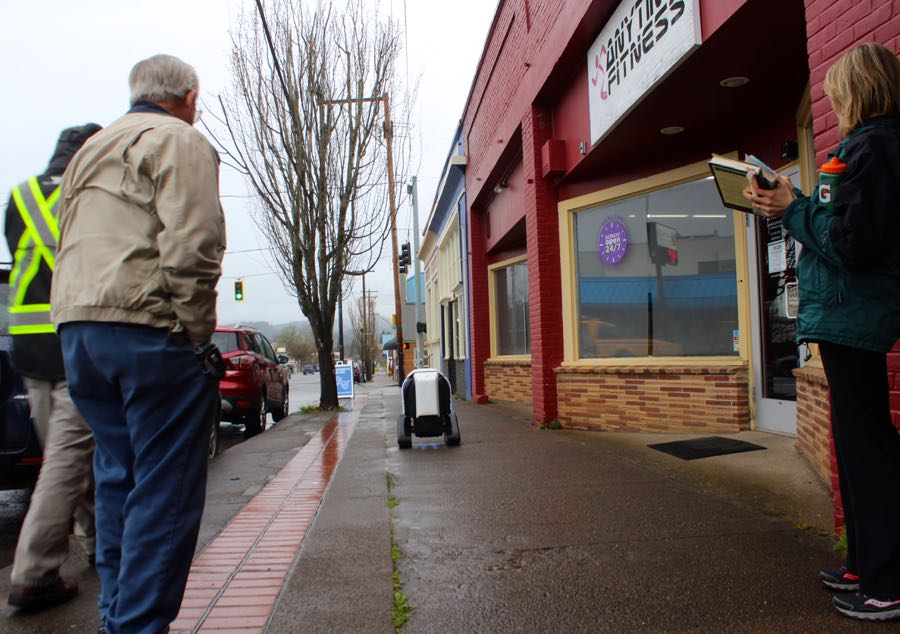 DAX rolls around downtown Philomath.
DAX rolls around downtown Philomath.
Not that any of that matters to residents of Philomath, where DAX has become just another face around town. On this Tuesday, DAX rolls down the sidewalk of Philomath’s main street bearing the La Rockita burrito. He navigates on his own, with light guidance from a human handler.
A woman stops to chat. “Oh, can I take a video of Dax?” An elderly man grins and looks on in disbelief.
“He better be careful,” he says, “Somebody might shoot at him.”
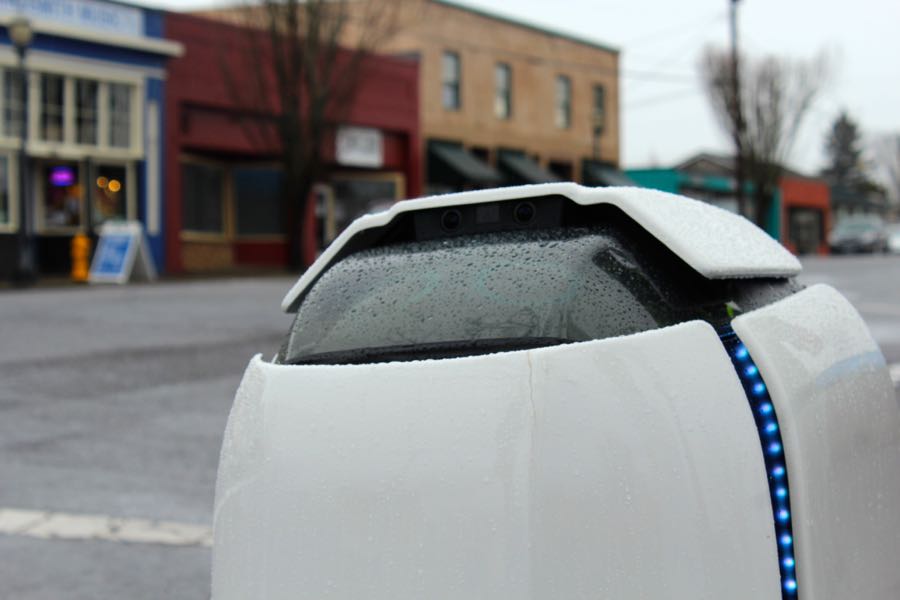 DAX stands about two-feet tall and can keep items hot or cold.
DAX stands about two-feet tall and can keep items hot or cold.
DAX was designed by engineers at Nova Dynamics, a secretive technology firm that calls Philomath home, but lists Cheyenne, Wyoming as its official address. The founder, Joseph Sullivan, declined to comment on the exact number of employees, or to allow a reporter into Nova headquarters.
So we met up at La Rockita.
Sullivan channels the cool, logical persona of Spock, but the nearly 30-year Philomath area resident is no space invader. He and Parmelee first tossed around the idea of robot burrito delivery while volunteering together at the fire department. Many of Nova’s engineers come from Corvallis tech companies, and DAX is manufactured in Oregon.
“When I say I’d like to deliver your good by robot, one of the first of its kind in the world,” Sullivan says, “I’m not a stranger flying in from somewhere.”
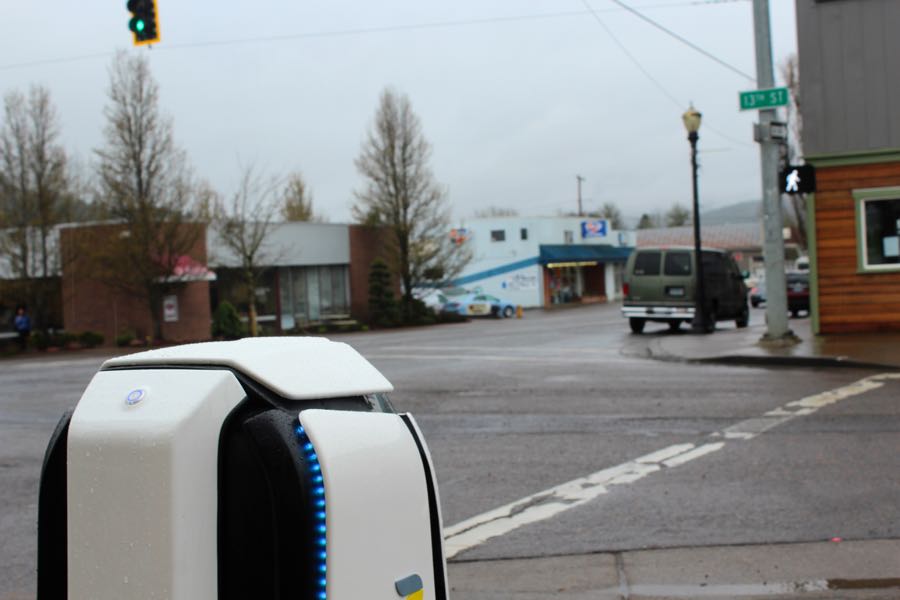 To appear more human, DAX looks both ways before crossing streets.
To appear more human, DAX looks both ways before crossing streets.
Sullivan predicted his robot would thrive in densely populated metros, but he wanted to prove its potential in the most unlikely of places. If the technology could work in Philomath, it could work anywhere.
The technical hurdles of programming DAX paled in comparison to the required culture shift. For DAX to gain acceptance, he needed to please people like the elderly man on the street.
“The big obstacle that I see is whether we want this robot, if it’s something we enjoy sharing space with,” Sullivan says. “Sidewalks and streets are a very old fishbowl. We need to make sure the new fish is acceptable to all the other fish.”
Sullivan theorized that people are more likely to accept robots that are “cannamorphic” — doglike. Nova designed Dax with that principal in mind. He makes eye contact briefly and looks away to signal he’s not a threat. He looks both ways at crosswalks, not because he’s concerned about getting hit, but because concern is an attractive feature in an anthropomorphic robot.
“Sidewalks and streets are a very old fishbowl,” Sullivan says. “We need to make sure the new fish is acceptable to all the other fish.”
Spend an hour or so with DAX in Philomath, and you see just how easy it is to normalize people’s relations with robots.
As he made his way to his next delivery, a Subway sub for a Nova employee, DAX attracted a fair number of R2D2 references, stopped cars and people snapping photos. More notable was how many people didn’t make comments, stop their vehicles or take photos. A crowd of high school students at Subway gave him little more than a passing glance.
The City Council didn’t flinch either when Sullivan approached them to ask permission for street testing DAX. After a quick presentation, Sullivan signed a memorandum of understanding with city officials. “I think they were surprised,” Sullivan said. “But once they realized how serious were were and how much time we put into it, they were very accommodating.”
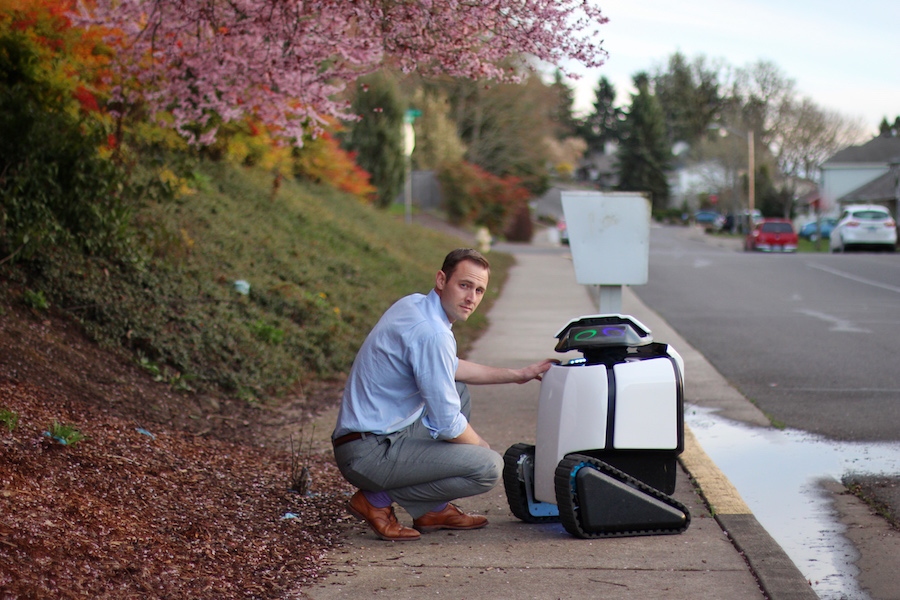 DAX and his creator, Joseph Sullivan. (courtesy Nova Dynamics)
DAX and his creator, Joseph Sullivan. (courtesy Nova Dynamics)
Sullivan will open an invitation-only beta test on May 15 to other businesses, like the donut shop and pizza joint down the road. He plans to earn revenue from deliveries in the first two quarters of 2018. Eventually, he hopes to deploy around 30 semi-autonomous robots roaming Philomath, guided by a central operator and available to local businesses as needed.
That’s a striking goal when you consider there are fewer than 300 DAX-like robots in the world today. If Sullivan has his way, 10% of this new breed might belong to a rural Oregon town.
“There are a lot of questions people have about robots,” Sullivan says. “Rather than give them my tech-optimist’s view, I’d like to say, here’s a little town in Oregon, go talk to the people and see what they think.”
This article has been corrected as follows: Dr. Spock is an American pediatrian, not the Vulcan science officer aboard Starship Enterprise. Spock does not hold a docterate from an Earthling University.
To subscribe to Oregon Business, click here.


